The development of technology has been nothing short of remarkable, and its impact on our lives has been enormous.
Over the past few decades, we have seen rapid advancements in technology that have revolutionized various aspects of our lives.
Evolution of Technology
Mobile phones

- Bulky designs, often weighing over 1 kg. Think of the Motorola DynaTAC 8000x from the 1980s.
- Limited to voice calls and basic text messaging (SMS). Analog networks (1G) with poor call quality and limited coverage.

- Slim, lightweight smartphones with touchscreens, high-speed internet, cameras, GPS, and apps for virtually every task.
- 5G, Wi-Fi, Bluetooth, and NFC for fast and versatile connections.
- They serve as communication devices, cameras, computers, and entertainment hubs.
Computers

- Large, room-sized mainframes or bulky desktops with limited processing power.
- Capable of performing basic computations and storing data.

- Compact, powerful, and highly efficient devices ranging from laptops and desktops to smartphones and tablets.
- With cloud computing and internet connectivity, they enable seamless communication, remote work, and smart automation in daily life.
Televisions

- CRT (cathode-ray tube) TVs with limited channels, no remote controls, and black-and-white or basic color displays.

- Flat-screen LED, OLED, or QLED TVs with 4K/8K resolution, smart features, streaming apps, and voice control.
Storage devices
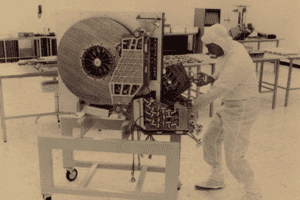
- Floppy disks, CDs, and small-capacity hard drives (measured in MB).
- Large, bulky hard drives. A 250MB hard drive in 1979 was enormous and impractical for home use.
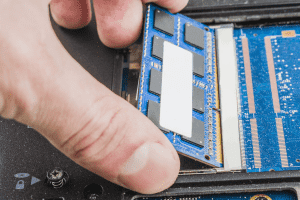
- USB flash drives, SSDs, and cloud storage with terabytes of capacity.
- NVMe SSDs are all generally quite small and compact. The most common form factor is the M.2 2280, which means it is 22 millimeters wide and 80 millimeters long.
Cameras

- Film cameras requiring physical film rolls, manual focus, and darkroom development.
- Require complex developing processes.

- Digital cameras and smartphone cameras with high megapixels, autofocus, and AI enhancements.
- High-quality images can be captured and shared instantly.
Music players

- Music players have gone through several iterations, from mechanical devices to portable electronic players.
- Early music players required physical media like vinyl records, cassette tapes, or CDs to play music.

- Modern music players are digital and often integrated into smartphones or dedicated devices.
- Streaming services and wireless technology have replaced physical media, allowing access to millions of songs instantly.
Gaming consoles

- Basic 2D graphics and limited gameplay.
- Early consoles like the Atari 2600, Nintendo Entertainment System (NES), and Sega Genesis used cartridges. Later, consoles like the PlayStation, Sega Saturn, and Nintendo GameCube transitioned to CDs and DVDs.
- Buy games in retail video game shops like Gamestop.

- High-definition 3D graphics, virtual reality (VR), and online multiplayer capabilities.
- Modern consoles like the PlayStation 5, Xbox Series X, and Nintendo Switch have digital stores where you can purchase and download games directly.
Portable speakers

- Required physical connections to audio devices (e.g., cassette players, CD players).
- Limited battery life and low sound quality.
- Large and heavy, with limited portability.
- Basic audio output with minimal bass or clarity.

- Bluetooth and Wi-Fi for seamless pairing with smartphones, tablets, and laptops.
- Rechargeable batteries offering 10-20 hours of playback.
- Waterproof and durable designs
- dvanced drivers, bass radiators, and stereo pairing for rich audio.
- Voice assistant integration (e.g., Alexa, Google Assistant) and app control.
- Compact and lightweight designs with carrying straps or handles.
Wearable devices

- Early wearable devices were basic and limited in functionality, often serving a single purpose like telling time or tracking simple metrics.
- Digital Watches: Displayed time and sometimes included basic calculators or games.
- Pedometers: Simple step-counting devices worn on the waist or wrist.
- Hearing Aids: Early wearable medical devices to assist with hearing.
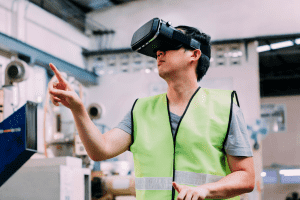
- Wearable devices are advanced, multifunctional, and connected to the internet, offering health monitoring, fitness tracking, and seamless integration with smartphones and other devices.
- Smartwatches: Track fitness, monitor health, and provide notifications (e.g., heart rate, sleep tracking).
- Fitness Trackers: Monitor steps, calories, and workouts (e.g., running, swimming).
- Health Monitoring: ECG, blood oxygen levels, and stress tracking.
- Wireless Connectivity: Bluetooth and Wi-Fi for syncing with smartphones and apps.
- Augmented Reality (AR) Glasses: Overlay digital information onto the real world.
- Wearable Medical Devices: Continuous glucose monitors, smart insulin pumps, and more.
Printers

- Dot matrix printers with low resolution and noisy operation.
- Inkjet printers sprayed ink onto paper, offering better quality but still slow.
- Laser printers used laser technology for faster, higher-quality prints but were expensive.
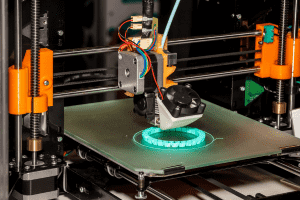
- Wi-Fi and Bluetooth for printing from smartphones, tablets, and cloud services.
- Laser and inkjet printers with resolutions up to 4800 dpi.
- Multifunction printers combine printing, scanning, copying, and faxing in one device.
- Energy-efficient designs and ink-saving modes.
- 3D printers create three-dimensional objects from digital files, used in prototyping, manufacturing, and even medicine.
Typewriters

- Mechanical devices used for writing text on paper. They featured individual keys for each character, which struck an inked ribbon to imprint letters onto paper.
- Early models were manual, while later versions included electric typewriters.
- No editing capabilities (errors required correction fluid or retyping).
- Limited formatting options (e.g., no bold, italics, or fonts).
- Heavy and bulky design.

- Typewriters have largely been replaced by computers and word processors.
- Modern typewriters may include USB connectivity for saving documents digitally.
- Some are designed as minimalist, retro-style devices for creative writing.
- No longer mainstream but valued for their tactile feel and simplicity.
Vacuum cleaners

- Manual vacuum cleaners (e.g., hand-pumped models) in the late 1800s.
- Early electric vacuums (introduced in the early 1900s) were heavy and noisy.
- Bag-based systems to collect dust and debris.
- Limited suction power and maneuverability.

- Cordless and rechargeable designs (e.g., stick vacuums).
- Robotic vacuums with autonomous cleaning and app control (e.g., Roomba).
- Bagless designs with easy-to-empty dust containers.
- HEPA filters for improved air quality.
- Smart sensors for mapping and avoiding obstacles.
Internet
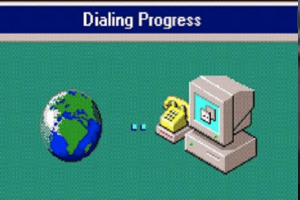
- The internet began as a government and academic project in the 1960s, evolving into a public utility in the 1990s.
- Early internet access was slow, limited, and primarily text-based.
- Dial-up connections with slow speeds (56 Kbps), limited websites, and no multimedia.
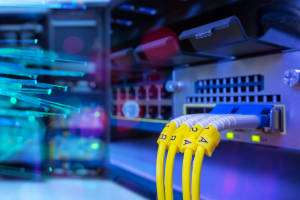
- High-speed broadband, fiber optics, and 5G with streaming, cloud computing, and social media.
- Wi-Fi and mobile data allow internet access anywhere.
- Everyday devices (e.g., smart home gadgets) are connected to the internet.
Communication

- Communication methods were limited by distance and technology, relying on physical or analog systems.
- Landline telephones, telegraphs, and fax machines.

- Communication is instant, global, and highly accessible, thanks to digital technology and the internet.
- Instant messaging, email, video calls, and social media platforms.
- Smartphones combine calling, texting, and internet access in one device.
Navigation

- Navigation relied on manual tools, celestial observations, and physical maps.
- Celestial Navigation: Using the stars, sun, and moon to determine position (e.g., sextants).
- Compass: Magnetic compasses helped determine direction.
- Paper Maps: Hand-drawn or printed maps were used for land and sea travel.
- Landmarks: Physical landmarks and lighthouses guided travelers.
- Early GPS (1980s-1990s): The first GPS systems were military-only and less accurate.

- GPS and satellite navigation systems with real-time traffic updates.
- GPS (Global Positioning System): Satellite-based navigation with pinpoint accuracy.
- Smartphone Apps: Apps like Google Maps, Waze, and Apple Maps provide turn-by-turn directions, traffic updates, and real-time rerouting.
- Autonomous Navigation: Self-driving cars use advanced GPS and sensors to navigate.
- Wearable Tech: Smartwatches with GPS for fitness and outdoor activities.
- Augmented Reality (AR): AR navigation overlays directions onto real-world views (e.g., Google Maps Live View).
Transportations

- Transportation relied on human or animal power, steam engines, and early combustion engines.
- Gasoline-powered vehicles with manual controls and no automation.

- Transportation is faster, more efficient, and more accessible, with a focus on sustainability and technology.
- Innovations like electric vehicles, high-speed trains, and autonomous driving are transforming the industry.
- Services like Uber, Lyft, and electric scooters provide flexible urban transport.
- Self-driving cars and trucks are being tested and deployed.
Lighting

- Early lighting relied on natural sources like sunlight and fire, evolving to artificial lighting with the invention of gas lamps and incandescent bulbs.

- Modern lighting is energy-efficient, long-lasting, and highly customizable.
- Advances in LED technology and smart systems have transformed how we light our homes, offices, and cities.